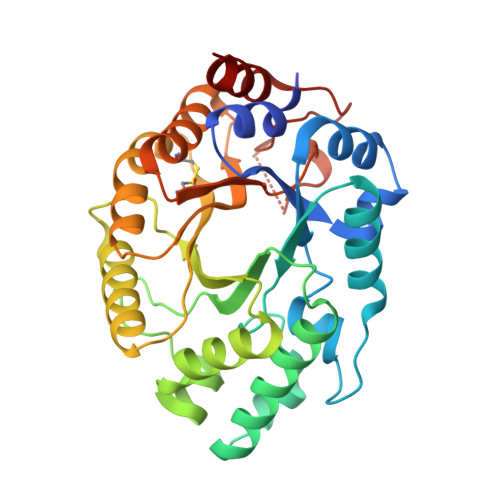How directed evolution reshapes the energy landscape in an enzyme to boost catalysis.
Otten, R., Padua, R.A.P., Bunzel, H.A., Nguyen, V., Pitsawong, W., Patterson, M., Sui, S., Perry, S.L., Cohen, A.E., Hilvert, D., Kern, D.(2020) Science 370: 1442-1446
- PubMed: 33214289
- DOI: https://doi.org/10.1126/science.abd3623
- Primary Citation of Related Structures:
7K4P, 7K4Q, 7K4R, 7K4S, 7K4T, 7K4U, 7K4V, 7K4W, 7K4X, 7K4Y, 7K4Z - PubMed Abstract:
The advent of biocatalysts designed computationally and optimized by laboratory evolution provides an opportunity to explore molecular strategies for augmenting catalytic function. Applying a suite of nuclear magnetic resonance, crystallography, and stopped-flow techniques to an enzyme designed for an elementary proton transfer reaction, we show how directed evolution gradually altered the conformational ensemble of the protein scaffold to populate a narrow, highly active conformational ensemble and accelerate this transformation by nearly nine orders of magnitude. Mutations acquired during optimization enabled global conformational changes, including high-energy backbone rearrangements, that cooperatively organized the catalytic base and oxyanion stabilizer, thus perfecting transition-state stabilization. The development of protein catalysts for many chemical transformations could be facilitated by explicitly sampling conformational substates during design and specifically stabilizing productive substates over all unproductive conformations.
Organizational Affiliation:
Howard Hughes Medical Institute and Department of Biochemistry, Brandeis University, Waltham, MA 02454, USA.
















